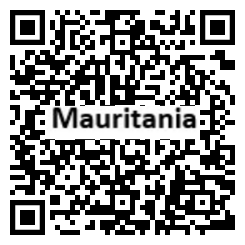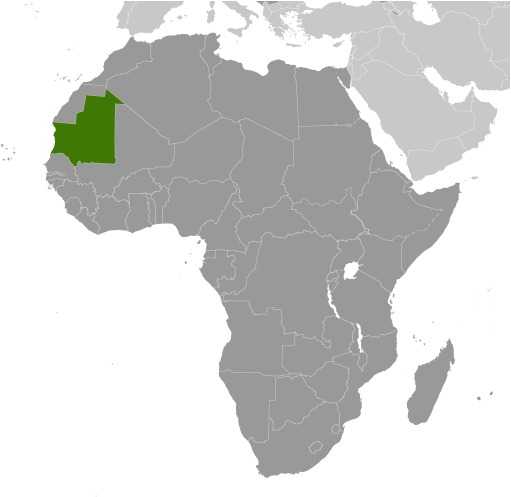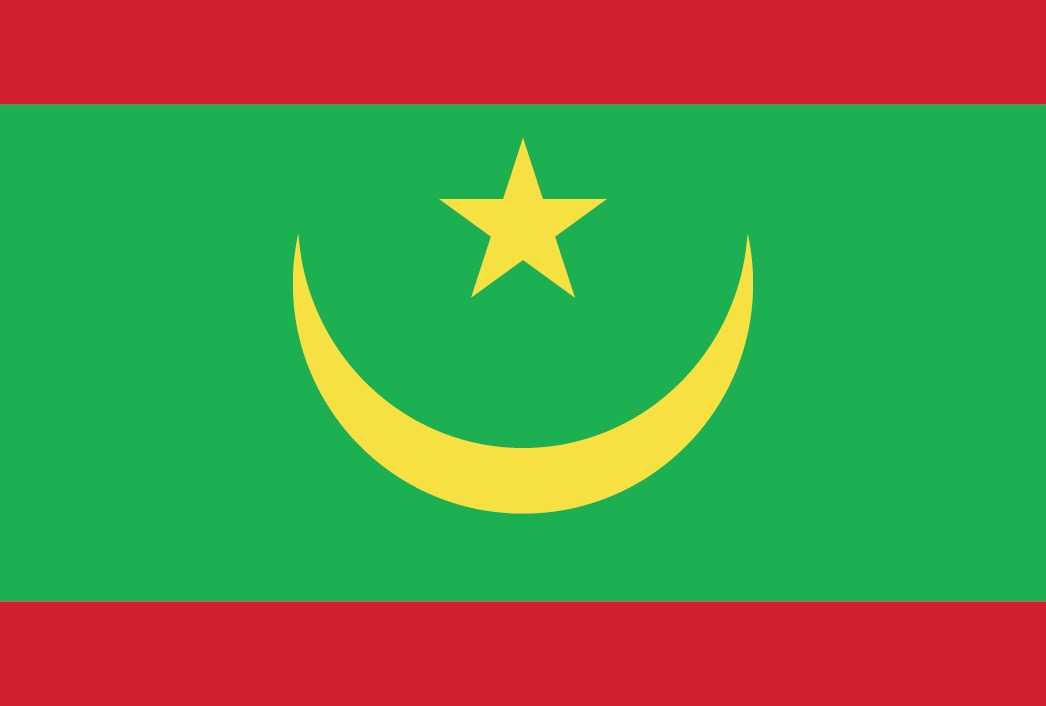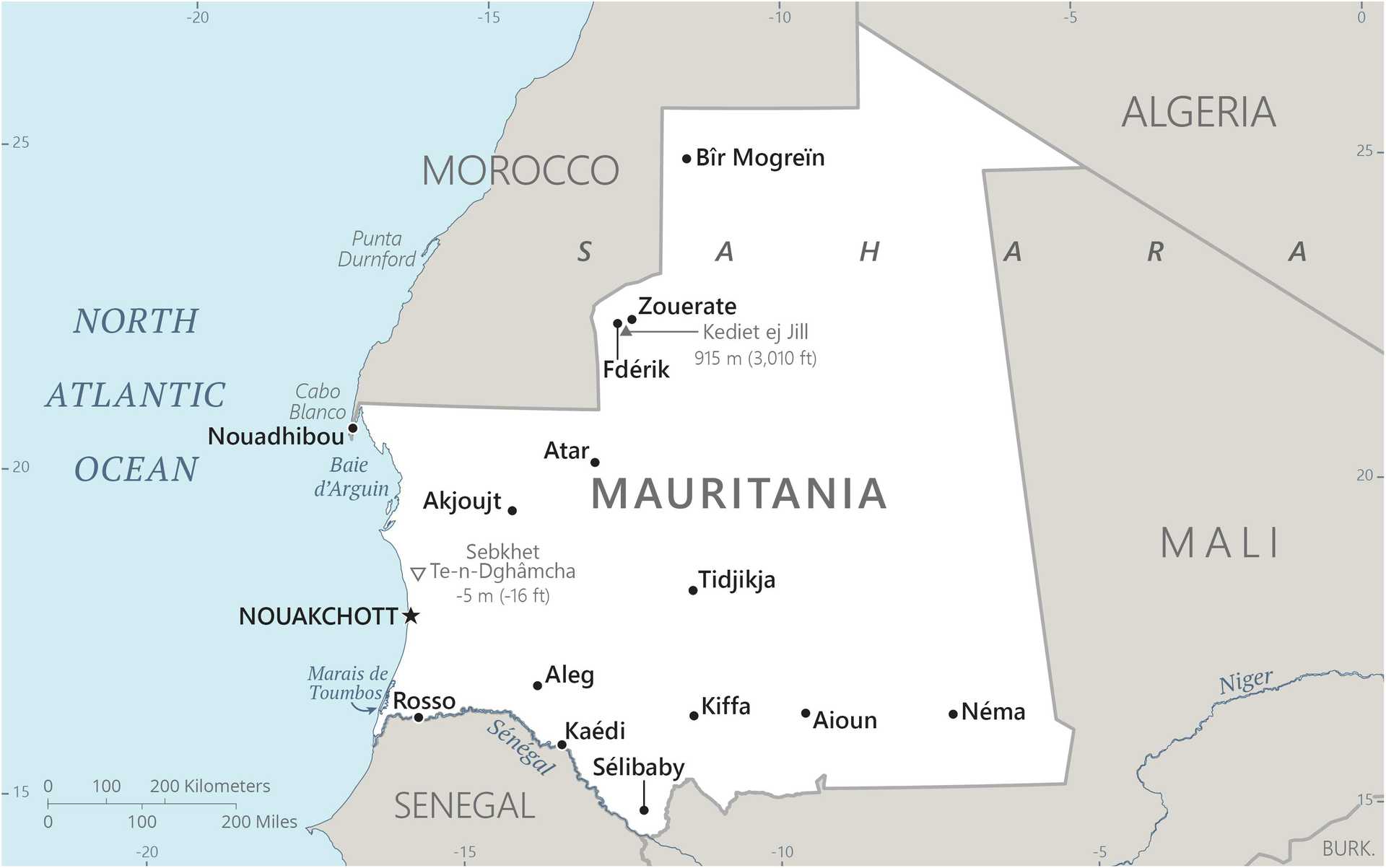Introduction
Background
The Amazigh and Bafour people were among the earliest settlers in what is now Mauritania. The country gained independence from France in 1960. After years of dictatorships, flawed elections, and military coups, the country is now an emerging democracy.
Geography
Area
total : 1,030,700 sq km
land: 1,030,700 sq km
water: 0 sq km
Climate
desert; constantly hot, dry, dusty
Natural resources
iron ore, gypsum, copper, phosphate, diamonds, gold, oil, fish
People and Society
Population
total: 4,328,040
Ethnic groups
Black Moors (Haratines - Arabic-speaking descendants of African origin who are or were enslaved by White Moors) 40%, White Moors (of Arab-Amazigh descent, known as Beydane) 30%, Sub-Saharan Mauritanians (non-Arabic speaking, largely resident in or originating from the Senegal River Valley, including Halpulaar, Fulani, Soninke, Wolof, and Bambara ethnic groups) 30%
Languages
Arabic (official and national), Pular, Soninke, Wolof (all national languages), French; note - the spoken Arabic in Mauritania differs considerably from the Modern Standard Arabic used for official written purposes or in the media; the Mauritanian dialect, which incorporates many Tamazight words, is referred to as Hassaniya
Religions
Muslim (official) 100%
Population growth rate
1.92% (2024 est.)
Government
Government type
presidential republic
Capital
name: Nouakchott
Executive branch
chief of state: President Mohamed Ould Cheikh el GHAZOUANI (since 1 August 2019)
head of government: Prime Minister Mohamed Ould BILAL (since 6 August 2020)
Legislative branch
description: bicameral Parliament or Barlamane consists of:
Senate or Majlis al-Shuyukh (56 seats, 53 members elected for a six-year term by municipal councilors, with one third renewed every two years)
National Assembly or Al Jamiya Al Wataniya (176 seats statutory; 88 members filled from one or two seat constituencies elected by a two-round majority system and the other 88 members filled from a single, nationwide constituency directly elected by proportional representation vote); 20 seats are reserved for women candidates in the nationwide constituency, 11 seats are reserved for young candidates (aged between 25 and 35), and 4 members directly elected by the diaspora; all members serve 5-year terms
Economy
Economic overview
lower middle-income West African economy; primarily agrarian; rising urbanization; poor property rights; systemic corruption; endemic social and workforce tensions; wide-scale terrorism; foreign over-fishing; environmentally fragile
Real GDP (purchasing power parity)
$30.395 billion (2023 est.)
$29.4 billion (2022 est.)
$27.635 billion (2021 est.)
Real GDP per capita
$6,300 (2023 est.)
$6,200 (2022 est.)
$6,000 (2021 est.)
Agricultural products
rice, milk, sorghum, goat milk, sheep milk, lamb/mutton, beef, camel meat, camel milk, dates (2022)
Industries
fish processing, oil production, mining (iron ore, gold, copper)
Exports
$4.132 billion (2022 est.)
$3.18 billion (2021 est.)
$2.784 billion (2020 est.)
Exports - partners
China 24%, Canada 12%, UAE 12%, Spain 9%, Turkey 6% (2022)
Exports - commodities
gold, iron ore, fish, processed crustaceans, animal meal (2022)
Imports
$5.77 billion (2022 est.)
$4.312 billion (2021 est.)
$3.675 billion (2020 est.)
Imports - partners
China 18%, Spain 7%, Morocco 6%, UAE 6%, Indonesia 6% (2022)
Imports - commodities
refined petroleum, iron pipes, wheat, raw sugar, palm oil (2022)
Exchange rates
ouguiyas (MRO) per US dollar -
Page last updated: Wednesday, July 24, 2024




